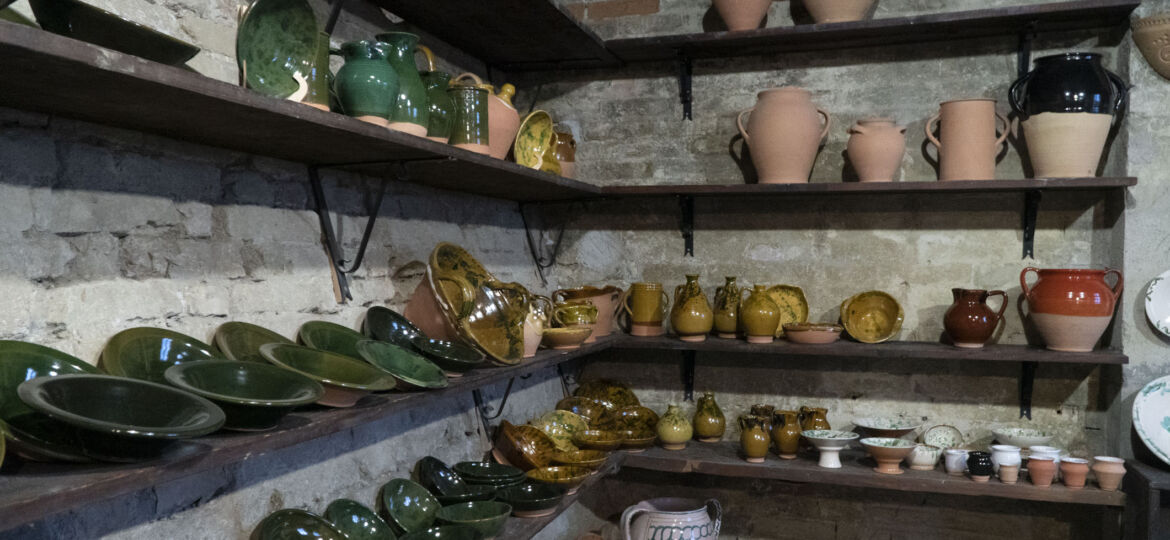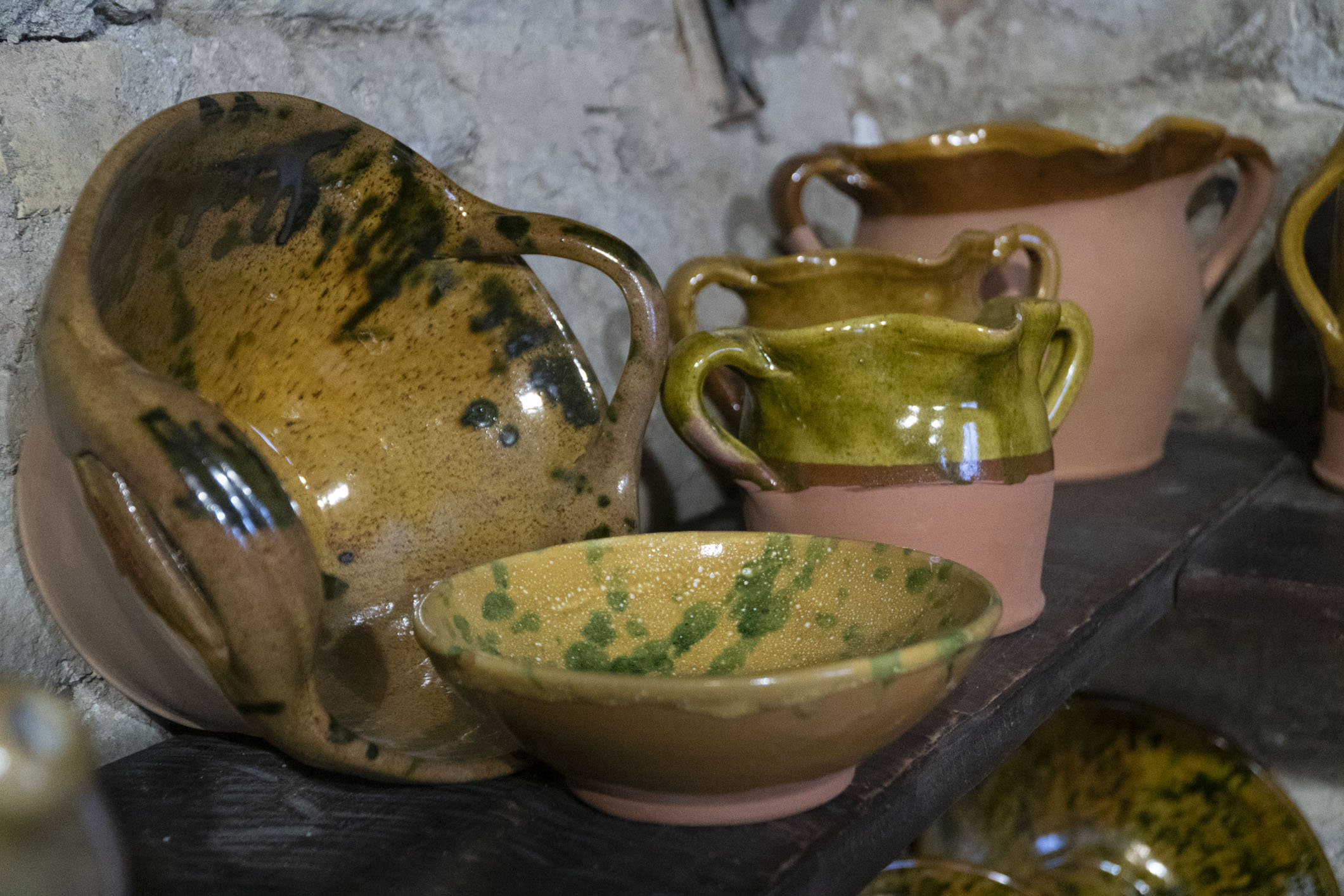
Colors, meanings, functionality, traditions: terracotta crockery once used in the home and kitchen hides a world of techniques, skills, rules and resource optimization. Let’s find out together…
It looks like a piece of contemporary art. Sketch painting,instinctiveness, primitiveness of color. The fruit of the encounter between ancient forms and contemporary coloring. Art that marries the everyday and becomes part of it.
It is actually a little bit like that, but in a very different sense. In the reality of this object, it is the everyday itself that becomes the stimulus for art, simple and necessary.
The one you see in the photo above is a faithful reproduction in the present of a terracotta object in daily use a while back in the countryside of Le Marche. It is a typical coccetto from the village of Montottone (FM), one of the symbols of the production of the ancient potter’s workshop.
One such workshop still survives in Montottone(watch the Bottega Bozzi video and follow the ancient stages of the terracotta-making process), just one today of the many that populated this area in the 1800s.
Speaking of pottery and ancient potter’s workshops, lathes, clays, forms created out of nothing almost by magic, the true and primary shaping of matter, come to mind. It is here that the first and important roots of craftsmanship are preserved, those ties to history and to the land of origin that give craftsmanship its typical warmth–and color.
And speaking of terracottas, one curiosity about the world of handicrafts and their techniques is related precisely to their traditional colors.
The colors of the terracottas were a kind of reminder, a way to identify uses and destinations of the objects, which in the nineteenth century were first and foremost objects of domestic, everyday use, such as dishes, pots and pans, containers for transporting, collecting, pouring, and storing food and drink.
Functionality and composure first, nothing left to chance but also nothing ordinary and unkempt. Each object had to meet the standards of tradition but had to do it right, to create a creation that was practical and durable but also pleasing to the eye.


